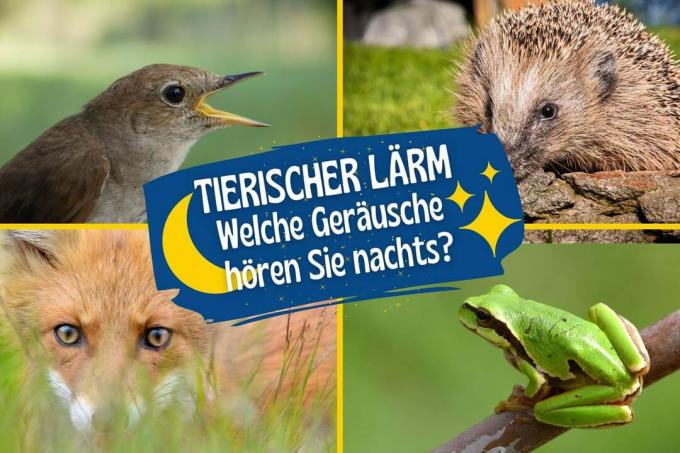
table of contents
- Birds
- Mammals
- Amphibians
- insects
- frequently asked Questions
Is it quiet at night? Are you kidding me? Are you serious when you say that! We introduce you to 25 animal species that can make a lot of noise in the dark. You can recognize these animals at night by these noises.
In a nutshell
- Animals make a variety of noises at night
- Birds sing or call
- Cats or martens scream loudly
- Cultural followers such as raccoons and wild boars make noise at night
- croaking frogs / toads and chirping insects are not uncommon
Birds
Few bird species are actually nocturnal, especially the different ones Owl species belong. These often hunt mice that are also under cover of darkness. The only nocturnal songbird is the nightingale with its distinctive, beautiful song. You hear the animal sounds of these birds very often at night.
Nightingale (Luscinia megarhynchos)

- Appearance: inconspicuous brown with a lighter underside
- Occurrence: dense bushes near the water
- Voice: loud and very variable; chirp, flute, trill
Note: Only the nightingale males sing, preferably in the mating season between early spring and mid-May. The singing can be heard between 11 p.m. and into the early hours of the morning. In summer nightingales also sing during the day, presumably to defend the area.
Little Owl (Aegolius funereus)
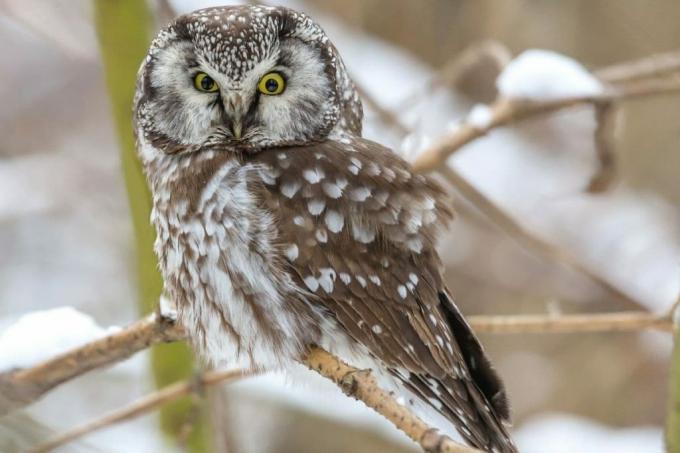
- Appearance: angular-looking, squat head with yellow eyes, dark brown plumage with white spots
- Occurrence: in coniferous forests or Conifer stands, breeds in black woodpecker holes
- Voice: slightly rising "hu-hu-hu-hu-hu-hu" (male), females let out short, sharp calls
Barn Owl (Tyto alba)
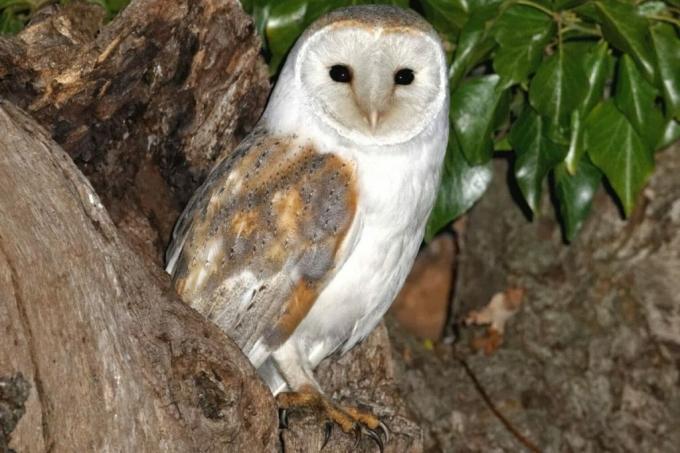
- Appearance: white, heart-shaped face; white underside and very light underwings; gray-brown top
- Occurrence: breeds in cavities in attics, barns and church towers
- Voice: screeching and hissing sounds during the breeding season (March to December)
Pygmy Owl (Glaucidium passerinum)

- Appearance: Round head with yellow eyes, brown plumage with white spots on the upper side, narrow breast lines, short tail
- Occurrence: in coniferous and conifer-dominated mixed forests, breeds in woodpecker holes
- Voice: "Tüh-düdü-düdü", strong initial sound with the following quieter tones, sometimes drawn out
Note: The shy pygmy owl is the smallest European owl species and only about the size of a star. It often hunts at the beginning of twilight.
Little Owl (Athene noctua)

- Appearance: broad face with yellow eyes, white speckled skull, elongated neck and short tail
- Occurrence: Cave breeder, often in Pastures and old fruit trees; also lives in localities in some areas and sometimes breeds in buildings there
- Voice: "Uuuh" in a loose row
Note: Little owls are very local birds. When the fully fledged offspring leave the parental territory at the age of two to three months, they usually settle only a few kilometers from the place of birth.
Tawny Owl (Strix aluco)

- Appearance: large head with white stripes; wide and round wings; short tail
- Occurrence: Cave breeders, in forests, parks and other old trees (e. B. large gardens)
- Voice: long, howling series of calls in autumn and spring (males); short and sharp “kvitt” from females
Note: The scary sounding howl of the tawny owl can often be heard in horror films. The widespread bird also hunts in the open at night, which is why it can not only be heard in forests.
Long-eared Owl (Asio otus)

- Appearance: big owl with orange eyes; large, mostly erect feather ears; low-contrast colored wings
- Occurrence: breeds at the edge of the forest, in field trees and groups of trees; hunts in the open at night
- Voice: dull "huh" sounds in a row; squeaking calls can be heard from young birds
Mammals
Nocturnal mammals are usually noticeable through movement and feeding noises, but can also scream, grunt, whine, bark, etc. These animals often make themselves noticeable through noises at night.
Badger (meles meles)

- Appearance: characteristic black and white striped face mask
- Occurrence: widespread, mostly common in forests, bushes with rich cover and broad hedges
- Lute: mainly in the "Ranzzeit" (mating season) from July; high-pitched screams reminiscent of children's screams
House mouse (Mus musculus)

- Appearance: gray-brown fur, large ears, pointed muzzle
- Occurrence: mostly in barns, storage facilities, grain silos, garbage dumps and in houses (often in partition walls there)
- Lute: mainly motion noise, e.g. B. Rustling, pounding, gnawing, scratching
Hedgehog (Erinaceus europaeus)
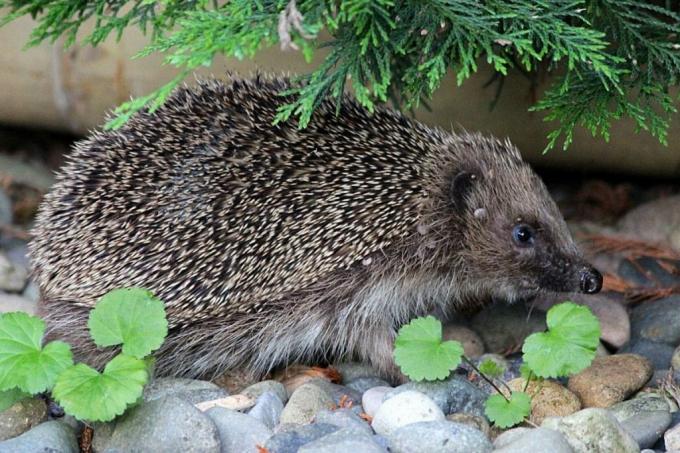
- Appearance: Back densely covered with two to three centimeters long spines
- Occurrence: in undergrowth-rich forests, bush-rich forest edges, parks and gardens
- Sounds: very loud smacking when eating, panting, hissing, piercing screaming when in danger
Red fox (Vulpes vulpes)
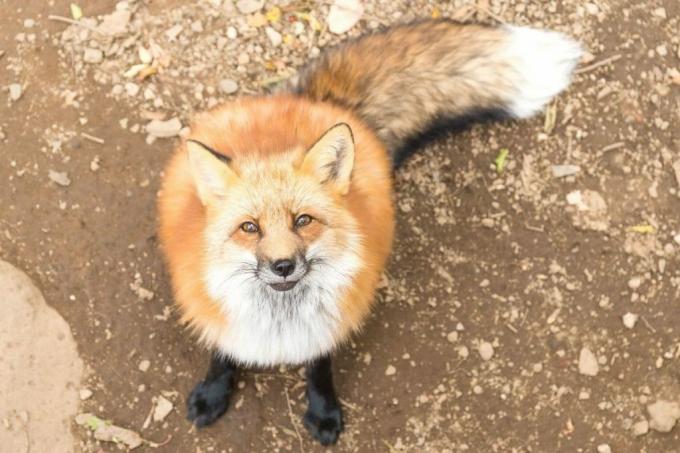
- Appearance: bushy tail with a white tip, red-brown fur
- Occurrence: originally a forest dweller; today in almost all habitats; even in big cities
- Sounds: very diverse; Barking, cackling, growling, whimpering, (high-pitched) screams
Dormouse (Glis glis)

- Appearance: long, bushy tail; big black eyes; grey fur
- Occurrence: in mixed forests, orchards, in natural gardens and parks, also in garden houses, stables and in attics
- Lute: noisy, rumbling noises in attics of young animals; Squeak, squeak, whistle, murmur, whistle
Note: Closely related, but less common, is the smaller garden dormouse (Eliomys quercinus), which can be distinguished from the dormouse by its black face mask. It makes similar noisesat night.
Beech marten (Martes foina)

- Appearance: black-brown fur with a white throat, elongated body with a long, bushy tail
- Occurrence: adaptable culture follower, often in human settlements; also in forests and farmlands
- Lute: loud rumbling, screaming, and squeaking in attics (caused by raging young animals); adult animals are usually calm, but can scream loudly and shrilly (e. B. during turf wars), hissing and barking
Raccoon (Procyon lotor)

- Appearance: characteristic black face mask; long, black and white banded tail
- Occurrence: Deciduous and mixed forests with tree hollows, as close as possible to water; often near human settlements
- Sounds: diverse; Screeching, cackling, growling
Wild boar (Sus scrofa)

- Appearance: thick, bristly fur; long snout
- Occurrence: preferably in mixed forests and maize fields, increasingly also in the vicinity of settlements or within settlements
- Sounds: very diverse; Grunts, squeaks, squeaks, snorts
Note: Wild boars live together in packs and are usually dusk or dawn in human proximity. nocturnal. They now even live in the middle of large cities and find plenty of food there.
Amphibians
Also amphibians - to which about frogs and Toads count - belong to those animals that make noises at night. Frogs, in particular, can get very loud, because their two sound bubbles amplify the creaking, cackling and croaking sounds. The intense and persistent croaking can be heard especially in the courtship season between the end of April and June. Only green frogs (i.e. pond frogs) croak during the day.
Note: Since frogs and toads have been protected by a decision of the Federal Court of Justice since 1992, the croaking in the garden pond has to be accepted - also by the neighbors.
Common toad (Bufo bufo)

- Appearance: relatively dry, warty and brown skin, copper-colored eyes with horizontal pupils
- Occurrence: mainly on meadows and in forests; only in May in spawning waters (stagnant or calm waters)
- Voice: soft "öök-öök-öök", only during the spawning season in May
Yellow-bellied toad (Bombina variegata)

- Appearance: gray-brown colored upper side with warts; striking yellow, spotted underside
- Occurrence: between April and October almost exclusively in stagnant water (ponds, ponds, small bodies of water); mainly in southern and central Germany
- Voice: bell-like, quiet "ung-ung-ung"
Note: Closely related is the fire-bellied toad (Bombina bombina), which occurs mainly in northern and central Germany and also makes similar noises.
Common Frog (Rana temporaria)

- Appearance: variable top made of brown, gray or yellow tones, mostly with a dark brown spot pattern
- Occurrence: in almost all humid biotopes, outside of the mating season on land
- Voice: has no sound bubbles, which is why croaking sounds like a dull growl
Note: The common frog is the most common frog species in Germany and is often at home in garden ponds and naturally managed gardens.
Tree frog (Hyla arborea)

- Appearance: grass green with dark stripes on the flanks
- Occurrence: mostly sits on bushes, Blackberry hedges and trees, only during spawning season in sunny ponds and pools
- Voice: loud and rhythmic "äpp-äpp-äpp", mainly in the evening and at night
Note: In contrast to other native amphibians, the tree frog can climb very well and also likes to sunbathe. His skin is comparatively insensitive to strong sunlight.
Pond frog (Rana esculenta)

- Appearance: light to dark green color with brown spots, light underside; two lateral sound bubbles
- Occurrence: in plant-rich pools, ponds, lakes and ditches; stays in or near the water most of the time, even outside of the mating season
- Voice: loud croaking of the males can be heard throughout the summer
Green toad (Bufo viridis)
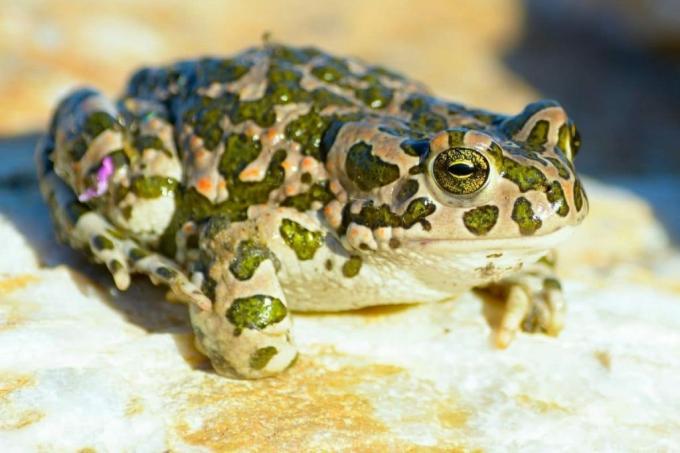
- Appearance: Toad in "camouflage colors", upper side with irregularly shaped, green fields and sharply demarcated light zones; lots of reddish warts
- Occurrence: in open, sunny terrain (v. a. Meadows, heathland, dry grass, dunes or gravel pits); as Spawning waters Ponds with little vegetation and shallow bank areas are preferred
- Voice: The male has a vocal sac on the throat with which it produces long-lasting trill calls ("ürrr") during the mating season; similar to mole crickets
insects
Even in the insect kingdom it is not quiet at night: cicadas, terrors or crickets can chirp very loudly, mostly by rubbing their wings. These animals make a lot of noise at night.
Mountain Cicada (Cicadetta montana)

- Appearance: black-brown color with transparent, shiny wings; orange border on abdominal segments
- Occurrence: in Germany from the low mountain ranges to the south; on sunlit slopes, clearings and on dry grass
- Singing: Males sing with specially trained organs; Loud and sharp singing lasting two to three seconds
Field cricket (Gryllus campestris)

- Appearance: black with brownish wings; Head wider than body
- Occurrence: in dry, sunny areas with low vegetation, in heather, dry grass and on embankments
- Sounds: loud, far-reaching chirping in the evening hours ("zri-zri-zri")
Note: The field cricket digs about 20 centimeters deep earth tubes, into which it takes refuge in case of danger. In the evening the male sits in front of the entrance of his tube and chirps his song, which can be heard up to 100 meters away, through the rhythmic stringing of his wings.
Common grasshopper (Chorthippusparallelus)
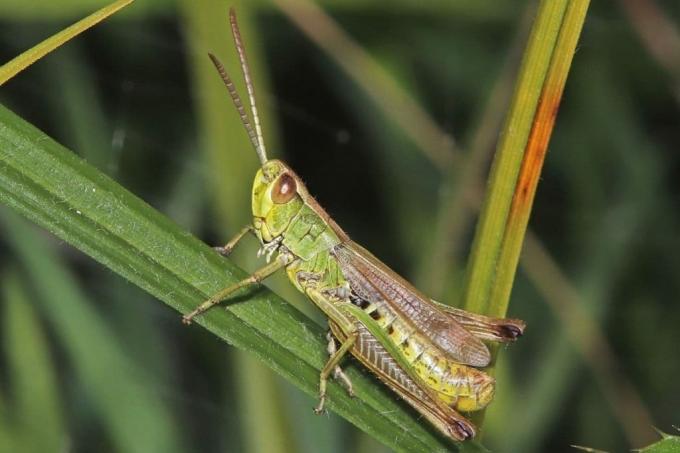
- Appearance: mostly greenish basic color, but also brownish, yellowish or reddish
- Occurrence: widespread, occurs on almost all vegetated areas
- Sounds: on warm summer evenings until midnight, short and raspy sounds ("säsrääsrä")
Common shrub insect (Pholidoptera griseoaptera)

- Appearance: short wings, cannot fly; bright yellow belly
- Occurrence: widespread in bushes-rich meadows and clearings, on the edges of forests, in gardens and parks
- Noise: Loud chirping caused by rubbing the wings together during mating season (only males)
Note: In autumn the female lays her eggs in dead wood or in the ground. The larvae hatch in the summer of the second year and develop into sexually mature animals within a few weeks.
frequently asked Questions
Only owls and, as the only songbird, the nightingale are really nocturnal. However, many songbirds start singing just before or during dawn during the breeding season, keeping to a precisely timed schedule. With this "bird watch" you can easily see who is singing.
With up to 90 decibels, frogs can croak quite loudly. So it's no wonder that some people feel disturbed in their night's sleep. However, the amphibians are strictly protected so that the neighboring pond neither has to be filled in nor the animals removed. Relocation is only permitted in exceptional cases. In any case, most frogs only croak for a short time, while the closed window and, if necessary, ear plugs can help.
Nocturnal animals such as martens, badgers or domestic cats are often hidden behind a nocturnal, high-pitched scream that is often described as eerie. These tones can usually be heard during turf wars or during the sacking time and can last for more than 20 minutes. Owls can also scream loudly and shrilly.



